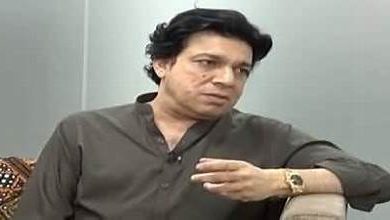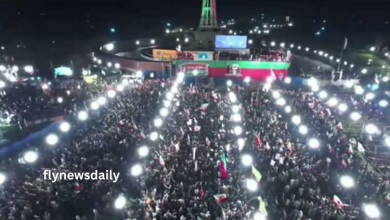
History and Significance of Eid ul-Fitr
Eid al-Fitr, also known as the “Festival of Breaking the Fast,” holds immense historical and religious significance in the Muslim community. This joyous celebration marks the end of the holy month of Ramadan, during which Muslims observe fasting and engage in prayer and acts of charity.
The history of Eid al-Fitr dates back to the time of the Prophet Muhammad, who established this festival as a way to commemorate the completion of Ramadan and express gratitude to Allah for the strength and perseverance during the month of fasting.
The significance of Eid al-Fitr lies in its ability to bring together families and friends, fostering a sense of unity and community spirit. It serves as a time for Muslims to reflect on their faith, seek forgiveness, and express gratitude for the blessings they have received. It is believed that on this auspicious day, Allah opens the gates of heaven, forgives sins, and showers his blessings upon his followers.
Eid al-Fitr also symbolizes the end of self-restraint and serves as a reminder of the importance of self-discipline and spiritual growth. It is a time for Muslims to rejoice in their achievements during the month of Ramadan and celebrate their commitment to their faith.
Date and Timing of Eid al-Fitr in 2024
The date of Eid al-Fitr varies each year as it is determined by the sighting of the crescent moon. In 2024, Eid al-Fitr is anticipated to be celebrated on a specific date, which will depend on the sighting of the moon. As per the Islamic lunar calendar, the festival begins with the sighting of the crescent moon on the evening of the 29th day of Ramadan.
The sighting of the moon is traditionally performed by religious authorities who carefully observe the sky to determine the exact date of Eid al-Fitr. Once the moon is sighted, the news is announced, and Muslims around the world begin their preparations for the festivities.
The timing of Eid al-Fitr is also significant, as it marks the transition from a month of fasting to a day of celebration. On the morning of Eid al-Fitr, Muslims gather at mosques or outdoor prayer grounds to offer special prayers known as “Eid prayers.” These prayers are a way to express gratitude to Allah and seek his blessings for the entire Muslim community.
Traditional Customs and Rituals Associated with Eid al-Fitr
Eid al-Fitr is a festival rich in customs and rituals, which have been passed down through generations. These traditions hold deep cultural and religious significance and are an integral part of the celebration. One of the most important customs is the practice of giving and receiving gifts, especially to children, as a way to express love and appreciation.
Another prominent ritual is the act of wearing new clothes on the day of Eid. Muslims dress in their finest attire, often donning traditional outfits, to mark the significance of the occasion. This practice symbolizes a fresh start and reflects the joy and happiness associated with the festival.
Additionally, Muslims are encouraged to engage in acts of charity during Eid al-Fitr. It is customary to give “Zakat al-Fitr,” a form of obligatory charity, which involves donating a specific amount of money or food to the less fortunate. This act of charity ensures that everyone can partake in the celebrations and experience the joy of Eid.
Celebrations and Festivities during Eid al-Fitr
Eid al-Fitr is a time of great celebration and festivities, with Muslims coming together to share joy and happiness. The day begins with the special Eid prayers, where Muslims gather in large numbers to offer prayers and seek blessings. After the prayers, families and friends embrace each other, exchange warm greetings, and wish each other “Eid Mubarak,” meaning “Blessed Eid.”
A significant part of the Eid al-Fitr celebrations is the communal feast known as “Eid al-Fitr Sadaqah.” Families prepare elaborate meals and invite friends and neighbors to share in the joyous occasion. The feast often includes traditional dishes such as biryani, kebabs, and sweets, adding to the festive atmosphere.
In addition to feasting, Muslims engage in various recreational activities during Eid al-Fitr. It is common to find amusement parks, fairs, and cultural events organized in many Muslim-majority countries. These activities provide an opportunity for families to bond, create lasting memories, and enjoy the festivities to the fullest.
Common Greetings and Wishes for Eid al-Fitr
During Eid al-Fitr, Muslims exchange greetings and well-wishes as a way to spread love and happiness. The most common greeting is “Eid Mubarak,” which translates to “Blessed Eid.” This phrase is used to convey blessings and good wishes to friends, family, and acquaintances.
Another popular greeting is “Eid Sa’id,” which means “Happy Eid.” This phrase is often used to express joy and delight on this special occasion. Muslims also exchange messages and wishes through social media platforms, spreading the festive spirit to a wider audience.
Eid al-Fitr Traditions Around the World
Eid al-Fitr is celebrated with unique customs and traditions in different parts of the world, reflecting the diversity within the Muslim community. In Saudi Arabia, for example, it is common for families to gather in the evening to enjoy traditional meals and engage in cultural activities. Fireworks and light displays illuminate the night sky, creating a magical ambiance.
In countries like Egypt, Morocco, and Tunisia, the streets come alive with vibrant decorations and colorful lanterns known as “fawanees.” These lanterns symbolize the joy and celebration associated with Eid al-Fitr, and they are often seen adorning homes, shops, and public spaces.
In Malaysia and Indonesia, communities organize large-scale open-air markets known as “Pasar Malam” or “Bazaar Ramadan.” These markets offer a wide range of food, clothing, and traditional crafts, creating a festive atmosphere and providing an opportunity for people to come together and celebrate.
Delicious Foods and Sweets Enjoyed during Eid al-Fitr
Food plays a central role in the celebrations of Eid al-Fitr, with families and communities indulging in a variety of delicious dishes and sweets. Traditional dishes such as biryani, korma, and samosas are prepared with great care and shared among loved ones. These dishes are often rich in flavor and reflect the culinary diversity within the Muslim community.
Sweets and desserts hold a special place during Eid al-Fitr. One of the most popular sweets is “Sheer Khurma,” a pudding made with vermicelli, milk, and dry fruits. This sweet delicacy is often prepared in large quantities and distributed to family, friends, and neighbors as a gesture of goodwill and generosity.
Gift-Giving and Charity during Eid al-Fitr
Gift-giving is an important part of Eid al-Fitr, as it symbolizes love, generosity, and gratitude. Muslims exchange gifts with family and friends, especially children, as a way to express affection and strengthen bonds. The gifts can range from toys and clothes to money and personalized items.
Charity holds great significance during Eid al-Fitr. Muslims are encouraged to give “Zakat al-Fitr,” a form of obligatory charity, to the less fortunate. This act of charity ensures that everyone can partake in the festivities and experience the joy of Eid. Muslims also engage in voluntary acts of charity, such as feeding the poor and visiting orphanages, to spread happiness and make a positive impact on their communities.
Conclusion: Embracing the Spirit of Eid al-Fitr
Eid al-Fitr is a festival of joy, unity, and gratitude, celebrated by Muslims around the world. It holds immense cultural and religious significance and serves as a reminder of the importance of self-discipline, reflection, and acts of charity.
By understanding the date, history, and traditions associated with Eid al-Fitr, one gains a deeper appreciation for the values it represents within the Muslim community. Let us embrace the spirit of Eid al-Fitr, spreading love, happiness, and goodwill to all.




MEKYUJTYJ133809MARETRYTR